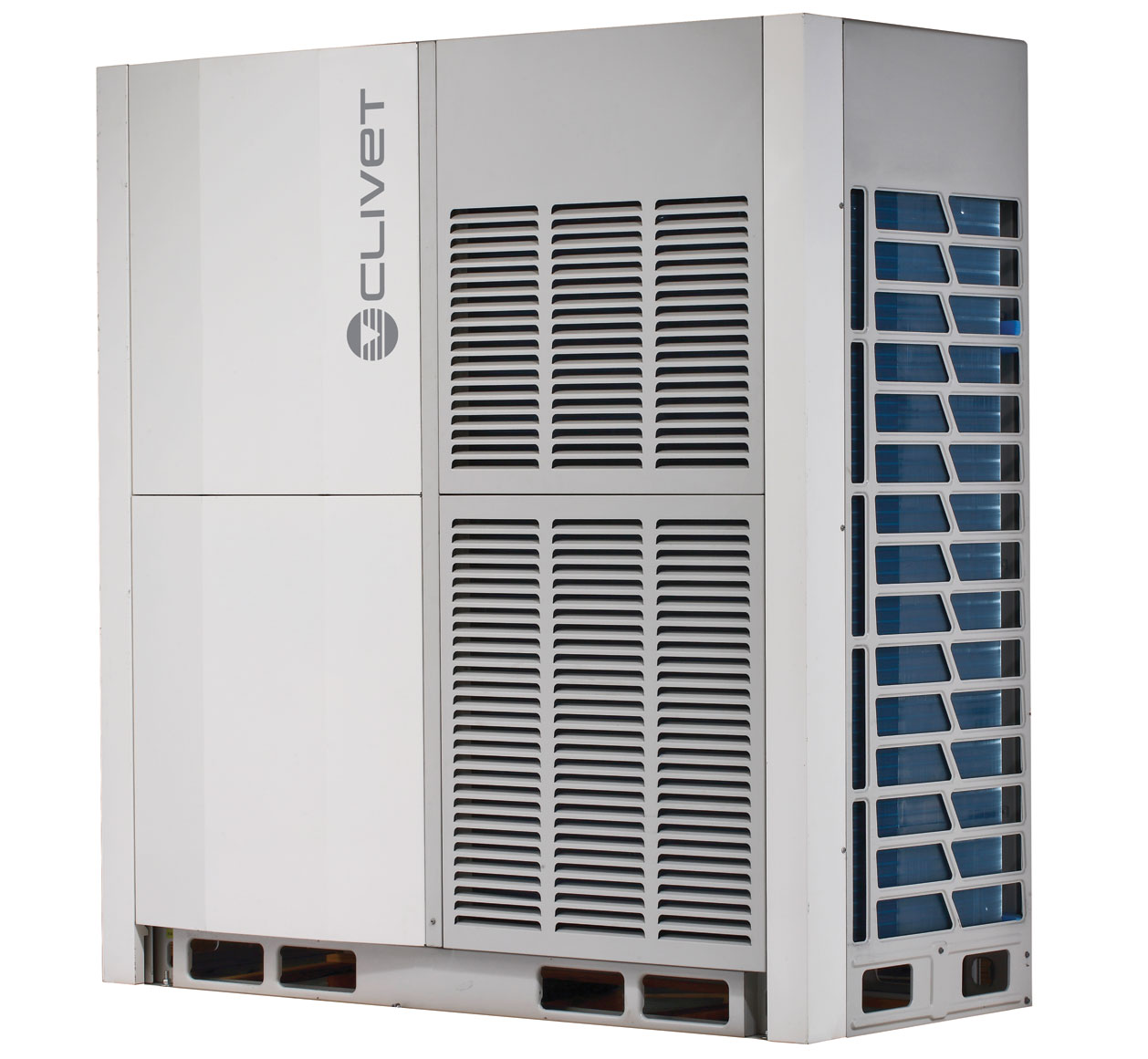Clivet VRF System
from 7 kW/2.5 HP to 270 kW/96 HP
The VRF system is the direct expansion solution for year round air conditioning, particularly suitable for commercial buildings, hotels and offices.
Both on the source side and on the use side, it is based on the direct heat exchange between refrigerant and environment.
The system terminals, ie the indoor units, are an integral part of the cooling circuit, acting as an evaporator in summer operation and as a condenser in winter operation.
Compared to the SPLIT system, the VRF is characterized by the presence of the electronic expansion valve on the individual indoor units, ensuring a greater extension of the system, in addition to a high number and total operation independence of the terminals.
The offer is completed by units for air renewal: HRV recuperators, direct expansion air handling units, ZEPHIR3 units with active thermodynamic recovery.
- Thanks to a full DC inverter range (compressors, fans) and electronic controls that allow only the power actually required by the individual zones to be supplied, the VRF system offers high efficiency and energy savings.
- The VRF system is able to meet the demands of air conditioning from small to large buildings, thanks to a wide range of units and extended cooling lengths. The system architecture is designed to be totally modular, combining units and controls according to specific needs. The automatic unit addressing function, available as standard, greatly simplifies and speeds up the installation phase.
- WIDE OPERATION RANGE AND HIGH RELIABILITY The correct functioning of the system is ensured up to -25 ° C in heating and from -15 ° C to 48 ° C in cooling. Reliability guaranteed by rigorous tests in the production phase and by multiple functions, including the rotation of the compressors for balancing the operating time and the backup in case of emergency in multi-module systems.The wide range of control systems makes it possible to take full advantage of the total independence of the terminals located in the different areas of the building, based on the specific requests. Commands are available for local management (individual units or centralized), or remotely (via cloud from a smartphone, tablet or PC).
